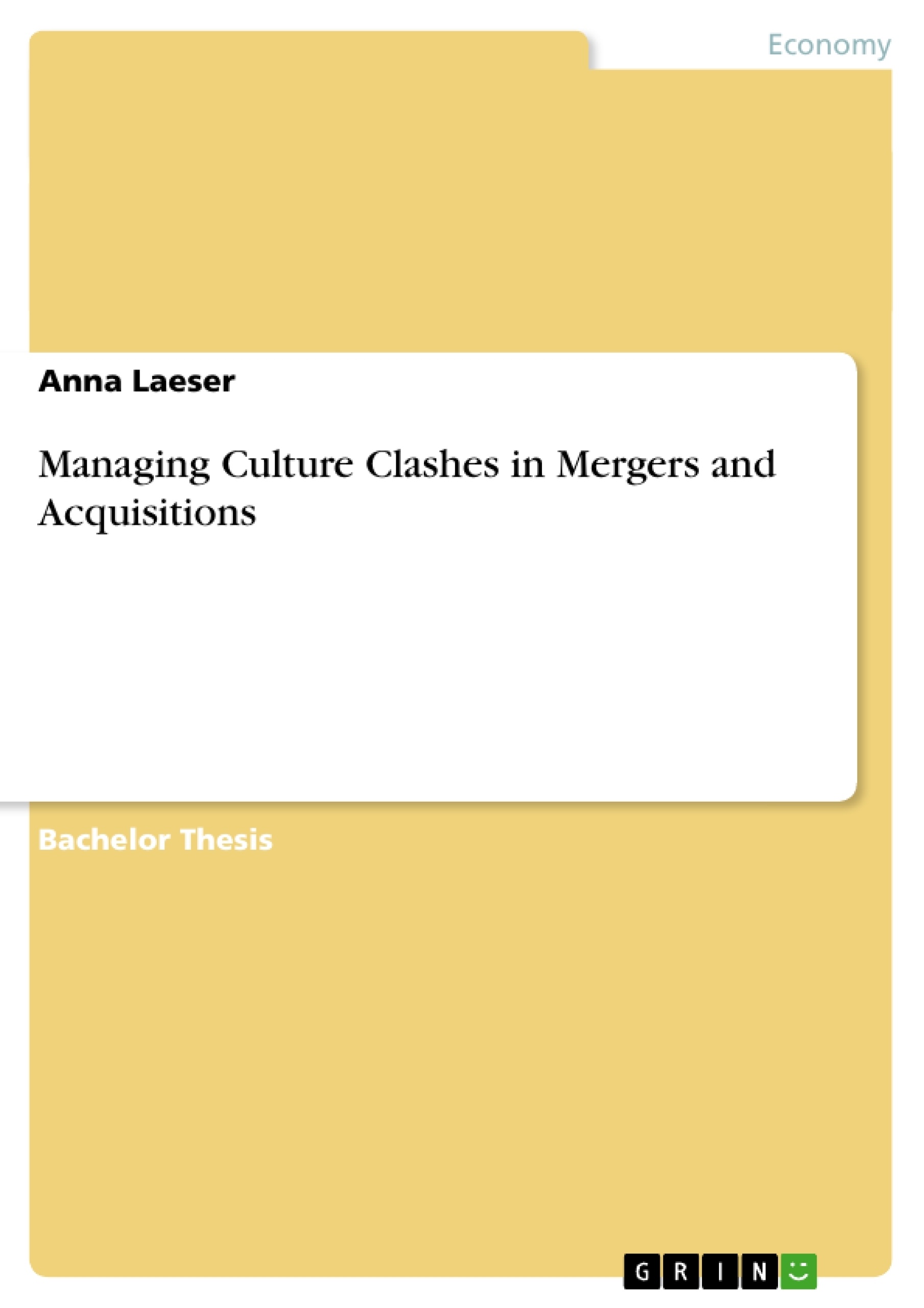Merger and acquisition activities have become an integral part of today’s businesses world. They are considered as strategic component to gain market share and extend product portfolios. Still, these transactions have a huge impact on an organization. This paper looks specifically at the M&A impact on company culture. Based on an analysis of identified key elements, which drive an M&A process, a cultural integration toolkit will be developed to solve identified cultural problems. Secondary data serves as source data for an inductive approach. Cultural problems and key drivers will be identified based on systematic research. The implantation of these key drivers in existing integration models will be further studied. Findings prove that not all of the identified key drivers are implemented in the models. Therefore, existing models solve the identified cultural problems semi-efficient. This leaves the need for a basic integration tool, which implements all key drivers, serves as guideline through an M&A process and provides specific instruments for realization of single steps. This paper develops such a basic integration toolkit in chapter 5. The toolkit meets all these requirements and proves that “managing culture clashes in M&A’s” is possible.
Inhaltsverzeichnis (Table of Contents)
- Introduction
- Overview of the M&A Market and Activity
- Problem Statement
- Research Method
- Structure
- Definitions
- Transactions and Due Diligence
- Culture and Culture Clashes
- Trust and Language
- Impact of M&A's
- In General
- During the M&A Stages
- Cultural Problems and Key Drivers in M&A Stages
- Integration Models as Solution Alternatives
- Analysis Approach
- Selection of Existing Integration Models
- The Delta Model by Faber
- The Three Phase Model by Wollersheim
- The Three Phase Model by Schneck
- The Three Phase Model by Schuler
- The Organizational Fit by Cartwright
- The Customized CDD Model by Carleton
- The Three Phase Framework by Trompenaars
- Various Supplemental Models and Studies
- Evaluation of the Models
- A Set of Cultural Integration Tools
- Conclusion
- Summary and Conclusion
- Outlook and Recommendations
Zielsetzung und Themenschwerpunkte (Objectives and Key Themes)
This thesis aims to explore the challenges posed by cultural clashes during mergers and acquisitions (M&As), particularly within the context of international transactions. It analyzes existing integration models and proposes a set of practical tools to manage cultural differences and optimize the integration process.- The impact of cultural clashes on M&A success
- Identification of key cultural drivers in M&A processes
- Analysis and comparison of existing integration models
- Development of a practical toolkit for managing cultural integration
- Recommendations for mitigating cultural clashes in future M&A transactions
Zusammenfassung der Kapitel (Chapter Summaries)
- Introduction: This chapter provides an overview of the M&A market, the problem statement, and the research methods employed. It also outlines the thesis structure.
- Definitions: This chapter defines key terms related to M&As, culture, and cultural clashes. It also explores the importance of trust and language in cross-cultural integration.
- Impact of M&A's: This chapter examines the impact of M&A's on businesses, specifically the challenges posed by cultural differences during different stages of the M&A process. It also analyzes key drivers of cultural problems within M&A transactions.
- Integration Models as Solution Alternatives: This chapter analyzes various existing integration models designed to address cultural differences and optimize the integration process. It includes a comprehensive evaluation of each model's strengths and weaknesses.
- A Set of Cultural Integration Tools: This chapter presents a practical toolkit containing tools and strategies for managing cultural integration during M&As. It emphasizes the importance of understanding and navigating cultural differences effectively.
Schlüsselwörter (Keywords)
This thesis focuses on the impact of cultural clashes in M&As, particularly during the integration process. Key concepts include cultural due diligence (CDD), integration models, cultural differences, trust, language, and practical tools for managing cultural integration. The analysis also incorporates frameworks such as the Delta Model and Trompenaars' framework.- Arbeit zitieren
- Anna Laeser (Autor:in), 2012, Managing Culture Clashes in Mergers and Acquisitions, München, GRIN Verlag, https://www.grin.com/document/211050



